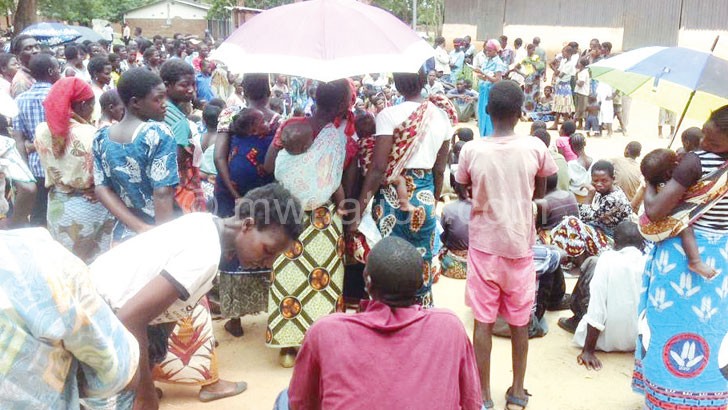Inflation rate Rises to 23.5%
Malawi’s inflation rate as measured by the consumer price index (CPI) rose to 23.5 percent in July 2015, a 0.9 percentage points from the previous month’s 22.6 percent, according to the National Statistical Office (NSO).
An increase in food inflation, which jumped by 1.5 percentage points to 29.2 percent in July from 27.7 percent he month before, is the main reason behind the rise in inflation rate, the NSO said.

Inflation rate is now 2.5 percentage points above the annual target of 21 percent set in January by Reserve Bank of Malawi (RBM), but 1.9 percentage points below the revised annual target of 25.4 percent indicated in last week’s fourth monetary policy statement.
Malawi is currently reeling from 12.4 percent deficit in maize, a staple crop that has a huge weight at 50.1 percent in the CPI, which measures changes in the price level of a market basket of consumer goods and services purchased by households.
In July last year, inflation rate was 22.2 percent, meaning that prices of goods and services have risen at a faster pace this year than last.
Figures from the Ministry of Agriculture, Irrigation and Water Development show that maize output this year has been estimated at 2.4 million metric tonnes (MT) before adjusting for
post-harvest loses.
Maize prices have also continued to rise with a 50 kilogramme (kg) bag of maize costing more than K13 000.
In a statement last week, RBM Governor Charles Chuka said while the central bank will focus on containing second round effects from food inflation, inflation rate is expected trend upwards due to rising food prices and expected depreciation of the kwacha.
Reads the statement: “The Reserve Bank of Malawi will focus on containing second round effects from food inflation to headline inflation. The bank will also intensify its communication on monetary policy issues to ensure well informed decision-making process by market players to manage and contain inflationary pressures through ill-informed expectations.
“This, supported by timely and efficient management of the food situation, as well as exercising prudence in government expenditure should help in ensuring a declining inflation trajectory into 2017.”
Meanwhile, Agricultural Development and Marketing Corporation (Admarc) plans to open its more than 1 000 selling depots nationwide in September, according to its chief executive officer, a move that is expected to cushion the rising maize prices.
This is despite the State produce trader yet to start bringing in 200 000 metric tonnes bought in Zambia and South America.
Mlumbe, however, said Admarc has over 60 000 MT of maize which should take the country through to December this year.
In an earlier interview, University of Malawi’s Chancellor College economics professor Ben Kaluwa described the rising inflation rate as not surprising, owing to the food deficit, which is pushing up maize prices. n





